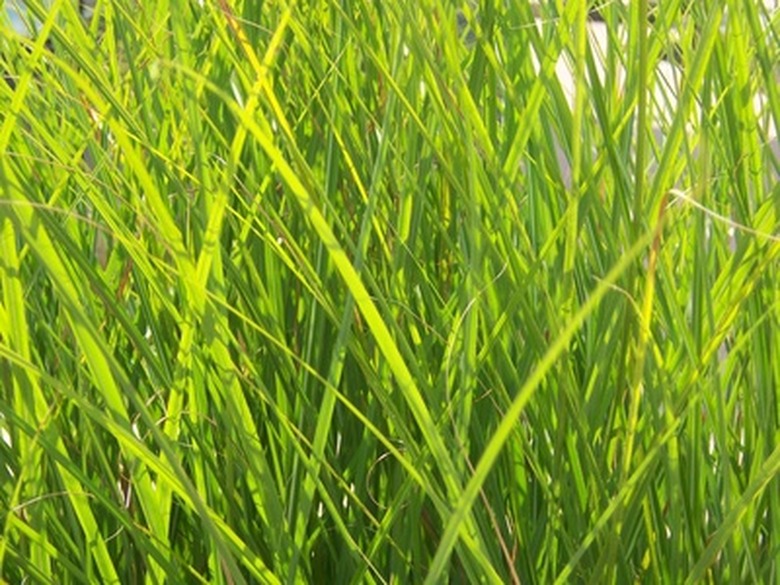How To Put Ironite On Bermuda Grass
Iron is a critical micro-nutrient that usually exists in high enough quantities in the soil that the Bermuda grass roots can take up the nutrient and process it. When there is a deficiency of iron in the soil, Bermuda grass can loose its green hue and turn yellow, becoming chlorotic. This can occur due to a lack of iron in the soil. It is also commonly due to an alkaline growing soil that prevents the roots from processing the iron present in the soil. Topical applications of Ironite or other iron sulfate products can compensate for this and restore the green color to your Bermuda grass.
Step 1
Apply Ironite to your Bermuda grass lawn four times a year, but not more than 10 times per year, as a supplement to your regular, N-P-K macro-nutrient fertilizing regimen.
Step 2
Spread or cast the Ironite over the expanse of Bermuda grass at a rate of 1 pound for every 100 square feet of lawn. Consult the product label to determine the aperture setting for your mechanical spreader if using one. Otherwise, cast the Ironite over the surface of the soil evenly, with a gloved hand.
- Iron is a critical micro-nutrient that usually exists in high enough quantities in the soil that the Bermuda grass roots can take up the nutrient and process it.
- Topical applications of Ironite or other iron sulfate products can compensate for this and restore the green color to your Bermuda grass.
Step 3
Water the entire expanse of Bermuda grass deeply after applying the Ironite. Drench the thatch and soil beneath to a depth of 4 to 6 inches to begin pushing the minerals down into the root zone.
Put Ironite On The Lawn?
Lawn grasses, like all plants, need an abundant supply of numerous essential nutrients for proper growth and reproduction. Ironite supplies iron in a form that is readily available to plants. Plants need iron only in minuscule amounts. Also, iron availability is heavily influenced by soil pH. Iron becomes unavailable as pH rises above 6.5, and most cases of iron deficiency are caused by high pH rather than an actual absence of iron in the soil. Grasses in general are susceptible to a conflict of interest that occurs in the spring. Increasing air temperatures and lengthening days promote rapid growth, but spring's cold soil suppresses the biological and chemical activity that makes nutrients available to plants. Supplemental iron, even soluble forms like Ironite, can become fixed into unavailable forms in soil with high pH. If your soil is alkaline, use the liquid form of Ironite so that the grass can absorb some iron through its leaves.
- Water the entire expanse of Bermuda grass deeply after applying the Ironite.
- Supplemental iron, even soluble forms like Ironite, can become fixed into unavailable forms in soil with high pH.
- If your soil is alkaline, use the liquid form of Ironite so that the grass can absorb some iron through its leaves.
Things Needed
- Ironite 1-0-1 mineral soil amendment/supplement
- Spreader
- Garden gloves
- Water
